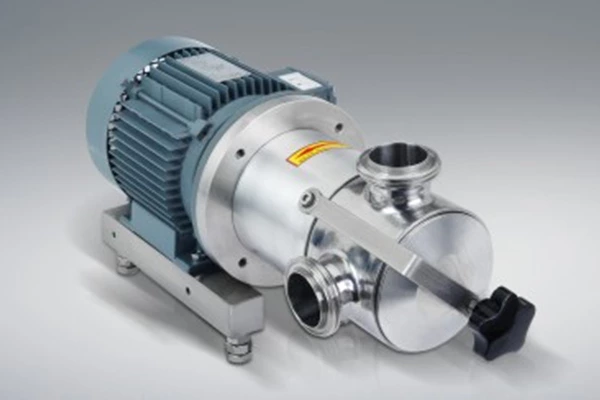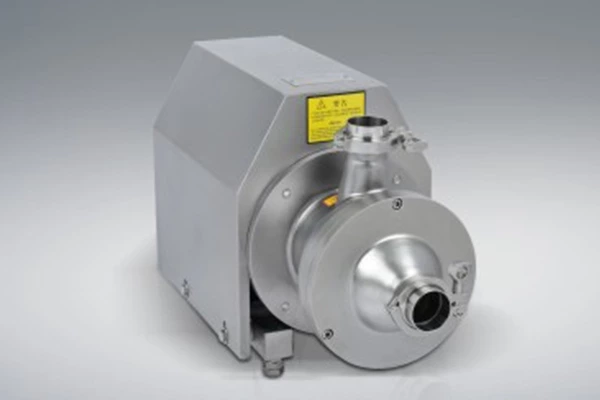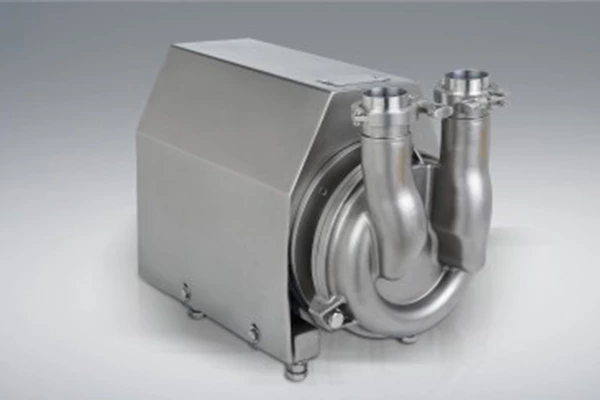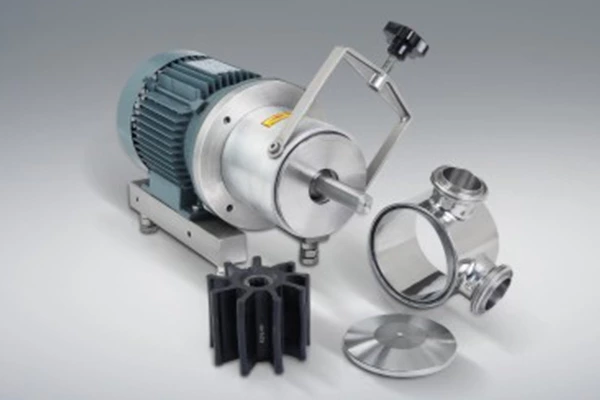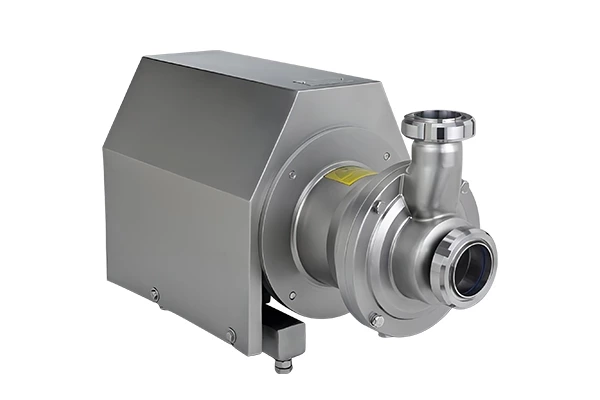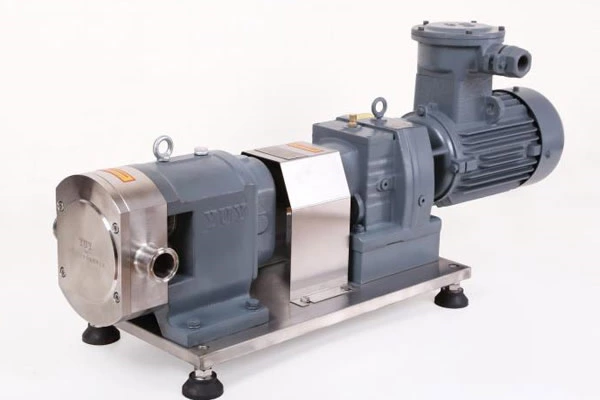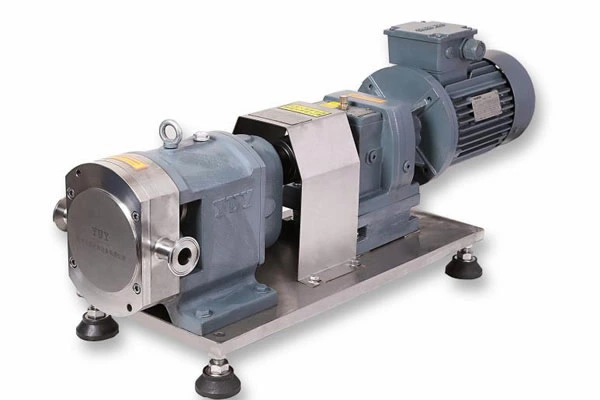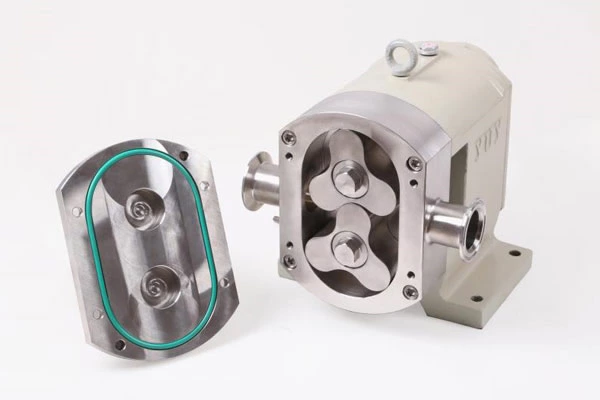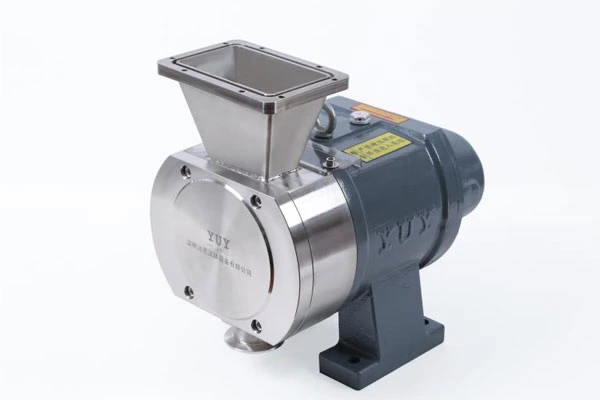What Are The Water Filling Methods For Centrifugal Pumps
CIP Return Pump (Except for self-priming pumps) Before starting, the water pump and the water inlet pipe must be filled with water, otherwise the water pump cannot pump water. The centrifugal pump does not produce water after starting, which is often due to the fact that the air in the pump has not been completely discharged and the water has not been filled.
There are two main methods of filling water before starting: one is to fill water with a bottom valve. The bottom valve is a one-way valve installed at the inlet of the water inlet pipe. The disadvantage of this method is that the head loss of the bottom valve is large, which affects the installation efficiency of the water pump; the other is to fill water without a bottom valve. The biggest advantage of this method is energy saving. Compared with a pump station with a bottom valve, it can save 10% to 15% of energy. The following introduces several methods of filling water for centrifugal pumps for users to choose when running the water pump.
■ Self-water diversion and filling method: For a semi-submerged pump room (i.e., a pump station where the elevation of the water inlet pipe and the top of the water pump are both below the water surface of the water inlet pool), water can be introduced into the water pump by itself without manual diversion. The disadvantage of this pump station is that it does not fully utilize the water absorption capacity of the water pump. At the same time, the installation elevation of the water pump is reduced, which not only increases the amount of foundation excavation, but also makes operation and management more inconvenient; but the advantages are also obvious, that is, it is easy to realize the automation of the pump station and has strong timeliness.
■ Artificial water filling method: For small pump stations with an inlet pipe diameter of less than 300mm, a bottom valve is usually provided at the inlet of the inlet pipe. Generally, the artificial water filling method is adopted, that is, water is filled from the special water filling and exhaust hole on the upper part of the water pump shell by a water filling funnel (or an inverted ordinary bottle with the bottom of the bottle removed). For small pump stations with an inlet pipe diameter of less than 300mm, a bottom valve is usually provided at the inlet of the inlet pipe, and water can also be filled into the pump from the outlet of the water pump (pump stations with shorter outlet pipes). Since there is no need to purchase other water filling equipment, this water filling method is more common in small rural pump stations at present.
For small pumping stations without bottom valves, check valves and short pipelines, you can also use the method of starting while filling water into the water pump from the outlet pipe, so as to gradually remove the air in the water pump and pipeline. Generally, after continuous water filling for a few minutes, the water pump can pump water normally.
■ Vacuum water tank filling method: For small pumping stations without bottom valves, the vacuum water tank filling method can be used. The vacuum water tank is a closed water tank welded with iron sheets. Its volume is at least 3 times the volume of the water inlet pipe. The water tank should be installed as close to the water pump as possible, and the bottom height of the water tank should also be slightly lower than the axis of the water pump. The height of the vacuum water tank is generally 2 times the diameter of the water tank.
Before starting the water pump, fill the water tank with water to seal it. After the water pump is started, the water pump takes in water from the vacuum tank. Due to the drop in the water level in the water tank, a certain vacuum is formed in the water tank. The water in the water inlet pool will enter the water tank through the water inlet pipe under the action of atmospheric pressure, thus forming a water cycle and allowing the water pump to start normal operation.
■Jet pump water filling method: When the diesel engine drives the water pump to pump water, the exhaust gas discharged by the diesel engine can be passed into the ejector connected to the top of the water pump to pump air and fill water, thereby removing the bottom valve of the water pump. When the water pump is started, the valve cover connected to the handle is closed, and the exhaust gas is ejected from the ejector, sucking out the air in the pump through the connecting pipe. After the water filling is completed, the valve cover is opened and the control valve is closed. The benefits of this water filling method are that the power machine is fully utilized and the efficiency of the pumping station is improved.
■Self-suspended water diversion and water filling method: The self-suspended water diversion and water filling method uses the bulk density difference between water and air and is realized through the principle of "water-gas replacement". This method can remove the bottom valve of the water pump.
First, design a ventilation tank with a suitable container. The ventilation tank is generally a plastic product or a thin iron sheet, and the cost is only half of the bottom valve. Then, the ventilation tank is placed at the water inlet of the water pump to form a connected body with the water pump and pipeline. At the same time, install a ventilation control valve on the ventilation flow channel between the ventilation tank and the water pump. When filling water, fill the ventilation tank with water in advance, then cover and seal it, and then open the ventilation valve. After the ventilation is completed, close the ventilation valve, and a part of the water will be suspended in the water inlet pipe. Repeat this method several times, the air will be completely exhausted, and the water inlet pipe will be filled with water. At this time, the water pump can be started for water pumping. Before shutting down, just close the gate valve first and then shut down, and the water will not return. There is no need to fill the water when starting next time. The advantages of this water filling method are that the ventilation tank is low in price, easy to manufacture, low labor intensity, and energy saving.
■ Vacuum pump water filling method: For large and medium-sized pumping stations with a water inlet pipe diameter greater than 300mm, or pumping stations with high automation requirements, vacuum exhaust devices are commonly used as a water filling device. It is assembled from a vacuum pump and other equipment. The vacuum pumps commonly used in drainage and irrigation stations are mostly water ring vacuum pumps.
An eccentric tooth-shaped impeller is installed in the cylindrical pump housing of the water ring vacuum pump. The pump housing is filled with circulating water. When vacuuming, the impeller rotates. Under the action of centrifugal force, the circulating water in the pump housing is thrown around the impeller, forming a rotating water ring on the inner wall of the pump housing. Because the impeller is eccentrically installed in the pump housing, the size of the space formed between the water ring and the tooth-shaped blades is different. When the impeller rotates clockwise, the space between the two blades in the right half gradually increases. Under closed conditions, as the air volume increases, the pressure decreases, forming a vacuum. The air in the water pump and the pipeline passes through the suction pipe and enters the crescent-shaped suction port on the right side of the vacuum pump housing and is sucked into the vacuum pump. The space between the two blades in the left half of the vacuum pump impeller is gradually reduced, so the air is compressed and the pressure increases. Finally, it is discharged from the vacuum pump through the crescent-shaped exhaust port on the left side of the vacuum pump housing and enters the water-gas separation box, so that the circulating water is separated and reused. The impeller rotates continuously, and the vacuum pump continuously inhales and exhausts air, and finally fills the water pump with water.
■ Manual pump filling method: As a type of reciprocating positive displacement pump, manual pumps are widely used in rural areas of my country. Farmers can use their own manual pumps as vacuum pumps to fill centrifugal pumps with water, which is convenient and economical. The most common usage is to install the manual pump on the suction hole of the centrifugal pump or on the water inlet pipe close to the water pump to pump air and divert water, making it a tool for filling water when the centrifugal pump is turned on, thereby eliminating the bottom valve on the water inlet pipe of the water pump, reducing energy loss, and improving the efficiency of the water pump device.
■ Self-water diversion and filling method: For a semi-submerged pump room (i.e., a pump station where the elevation of the water inlet pipe and the top of the water pump are both below the water surface of the water inlet pool), water can be introduced into the water pump by itself without manual diversion. The disadvantage of this pumping station is that it does not fully utilize the water absorption capacity of the water pump. At the same time, the installation elevation of the water pump is reduced, which not only increases the amount of foundation excavation, but also makes operation and management more inconvenient; but the advantages are also obvious, that is, it is easy to realize the automation of the pumping station and has strong timeliness.
■ Self-suspended water diversion and water filling method: The self-suspended water diversion and water filling method uses the difference in bulk density between water and air and is realized through the principle of "water-gas replacement". This method can remove the bottom valve of the water pump.
First, design a ventilation tank with an appropriate amount of container. The ventilation tank is generally a plastic product or a thin iron sheet. The cost is only half of the bottom valve. Then, place the ventilation tank at the water inlet of the water pump to form a connecting body with the water pump and the pipeline. At the same time, install a ventilation control valve on the ventilation flow channel between the ventilation tank and the water pump. When filling water, fill the ventilation tank with water in advance, then cover and seal it, and then open the ventilation valve. After the ventilation is completed, close the ventilation valve, and a part of the diverted water will be suspended in the water inlet pipe. Repeat this method several times, and the air will be completely exhausted, and the water inlet pipe will be filled with water. At this time, the water pump can be started for water pumping. Before shutting down, just close the gate valve first and then shut down, and the water will not return. You don't need to fill the water again when you start it next time. The advantages of this water filling method are that the price of the air exchange tank is low, it is easy to manufacture, the labor intensity is low, and it saves energy.
■ Vacuum pump water filling method: For large and medium-sized pumping stations with a water inlet pipe diameter greater than 300mm, or pumping stations with a high degree of automation requirements, vacuum exhaust devices are commonly used as a water filling device. It is assembled from a vacuum pump and other equipment. Most of the vacuum pumps commonly used in drainage and irrigation stations are water ring vacuum pumps. An eccentric toothed impeller is installed in the cylindrical pump casing of the water ring vacuum pump. Circulating water is filled in the pump casing. When vacuuming, the impeller rotates. Under the action of centrifugal force, the circulating water in the pump casing is thrown around the impeller, forming a rotating water ring on the inner wall of the pump casing. Because the impeller is eccentrically installed in the pump housing, the space formed between the water ring and the tooth-shaped blades is different in size.
When the impeller rotates clockwise, the space between the two blades in the right half gradually increases. Under closed conditions, as the air volume increases, the pressure decreases, forming a vacuum. The air in the water pump and pipeline passes through the suction pipe and enters the crescent-shaped suction port on the right side of the vacuum pump housing to be sucked into the vacuum pump. The space between the two blades in the left half of the vacuum pump impeller is gradually reduced, so the air is compressed and the pressure increases. Finally, it is discharged from the vacuum pump through the crescent-shaped exhaust port on the left side of the vacuum pump housing and enters the water-gas separation box, so that the circulating water brought out can be separated and reused. The impeller keeps rotating, and the vacuum pump continuously inhales and exhausts air, and finally fills the water pump with water.
